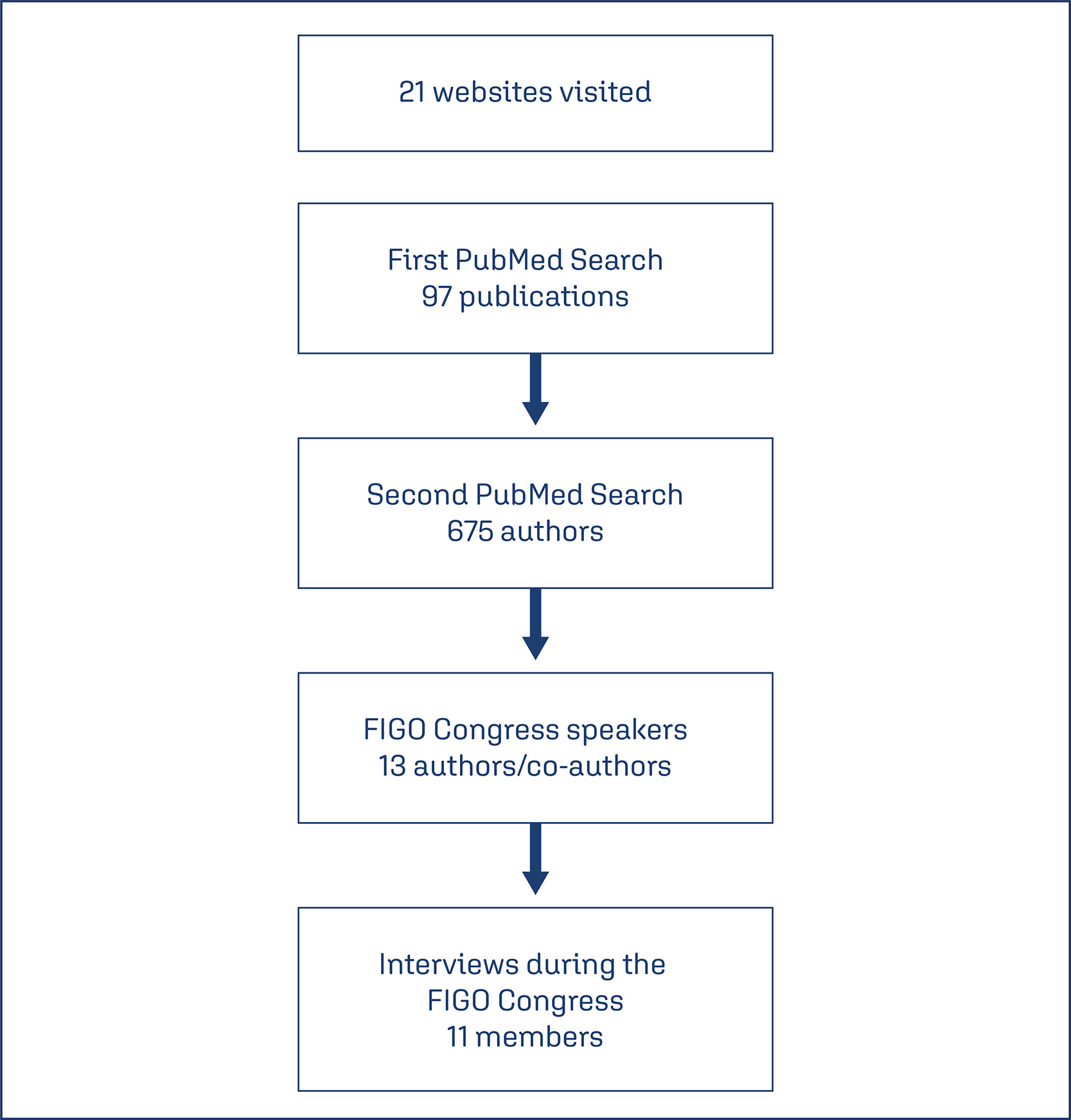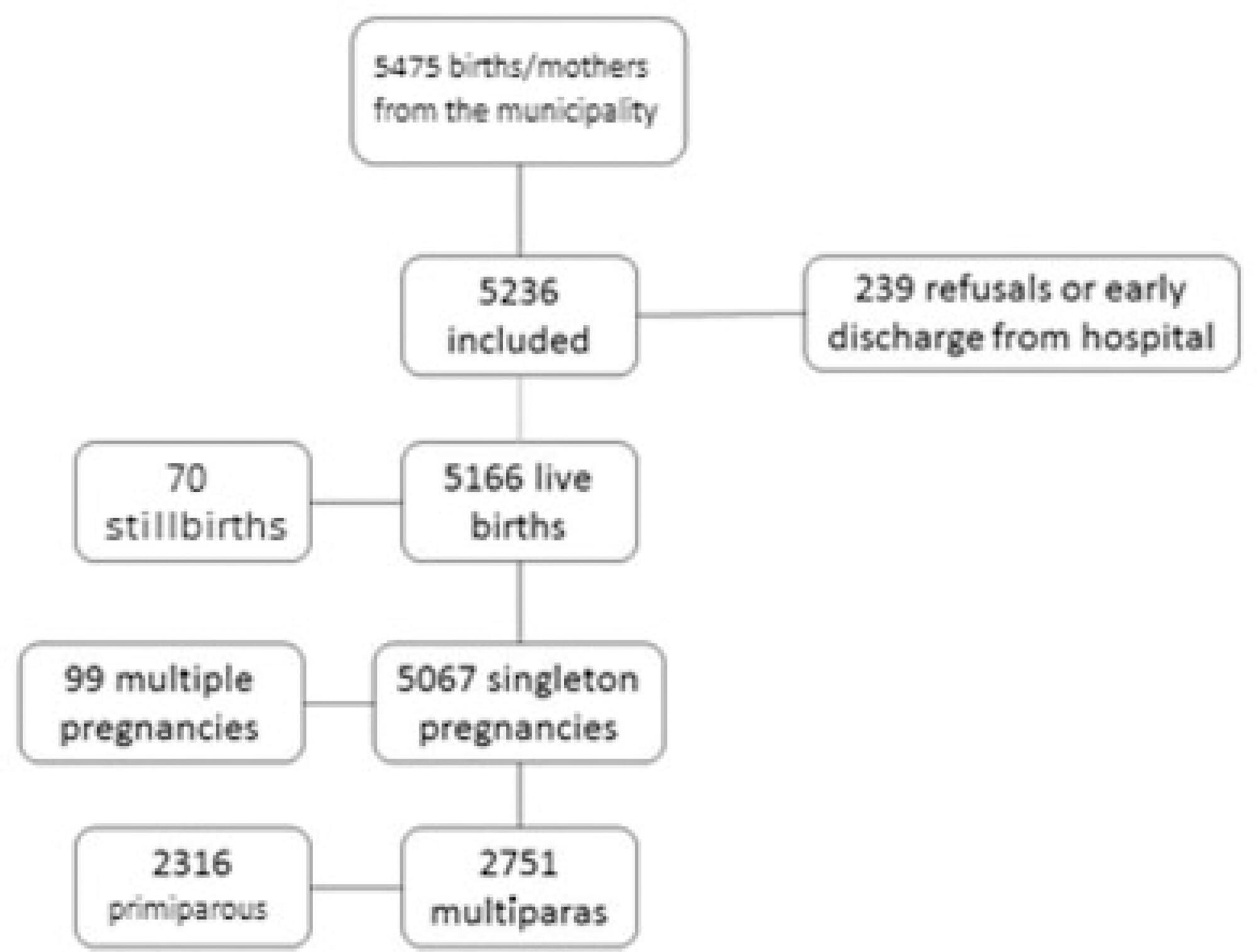Summary
Revista Brasileira de Ginecologia e Obstetrícia. 2024;46:e-rbgo75
To identify the opinion of coordinators and members about the essential characteristics and to understand the research networks characteristics, to facilitate their implementation, sustainability and effectiveness so it can be replicated in low and middle-income countries.
A qualitative study using a semi-structured interview technique was conducted. We selected potential members, managers and participants of networks from publications identified in PubMed. After checking the FIGO congress program, we identified authors who were assigned as speakers at the event. An invitation was sent and interviews were scheduled.
In total, eleven interviews were performed. Coordinators and members of networks have the same goal when they decide to participate in a network. In general, they cited that these individuals had to be committed, responsible and enthusiastic people. The network should be composed also of postgraduate students. A network should allow multi-leadership, co-responsibility, autonomy and empowerment of its members. Effective communication was mentioned as an important pillar for network maintenance. Another motivation is being an author or coauthor in publications. One way to maintain a network running is social or governmental commitment, after resources expire, studies continue.
Networks are different due to the social context where they are inserted, however, some characteristics are common to all of them, such as having engaged leaders. For an effective and sustainable network, commitment and motivation in a leader and members are more in need than financial resources. Ideally, to ensure the operation of the network, the institution where the leader is linked should support this network.

Summary
Revista Brasileira de Ginecologia e Obstetrícia. 2024;46:e-rbgo45
To explore women's experiences with postpartum intrauterine device (PPIUD) insertion and the decision-making process in the postpartum period.
A qualitative design was employed with face-to-face interviews using a semi-structured script of open questions. The sample was intentionally selected using the concept of theoretical information saturation.
Interviews were conducted (1) in the immediate postpartum period, and (2) in the postpartum appointment. 25 women (N = 25) over 18 years old who had a birth followed by PPIUD insertion were interviewed between October 2021 and June 2022. Three categories were constructed: (1) Choice process, (2) Relationship with the health team at the time of birth and the postpartum period, and (3) To know or not to know about contraception, that is the question.
Professionals’ communication management, popular knowledge, advantages of the PPIUD and the moment PPIUD is offered play a fundamental role in the construction of knowledge about the IUD. Choice process did not end in the insertion.

Summary
Revista Brasileira de Ginecologia e Obstetrícia. 2023;45(7):393-400
Endometriosis causes a decrease in oocyte quality. However, this mechanism is not fully understood. The present study aimed to analyze the effect of endometriosis on cumulus cell adenosine triphosphate ATP level, the number of mitochondria, and the oocyte maturity level.
A true experimental study with a post-test only control group design on experimental animals. Thirty-two mice were divided into control and endometriosis groups. Cumulus oocyte complex (COC) was obtained from all groups. Adenosine triphosphate level on cumulus cells was examined using the Elisa technique, the number of mitochondria was evaluated with a confocal laser scanning microscope and the oocyte maturity level was evaluated with an inverted microscope.
The ATP level of cumulus cells and the number of mitochondria in the endometriosis group increased significantly (p < 0.05; p < 0.05) while the oocyte maturity level was significantly lower (p < 0.05). There was a significant relationship between ATP level of cumulus cells and the number of mitochondrial oocyte (p < 0.01). There was no significant relationship between cumulus cell ATP level and the number of mitochondrial oocytes with oocyte maturity level (p > 0.01; p > 0.01). The ROC curve showed that the number of mitochondrial oocytes (AUC = 0.672) tended to be more accurate than cumulus cell ATP level (AUC = 0.656) in determining the oocyte maturity level.
In endometriosis model mice, the ATP level of cumulus cells and the number of mitochondrial oocytes increased while the oocyte maturity level decreased. There was a correlation between the increase in ATP level of cumulus cells and an increase in the number of mitochondrial oocytes.
Summary
Revista Brasileira de Ginecologia e Obstetrícia. 2020;42(2):67-73
To determine the prevalence of inadequate birth interval and its associated factors in the BRISA study.
Cross-sectional study using data from the BRISA cohort. Birth interval was categorized into “adequate” (≥ 2 years or < 5 years between births), “short interval” (< 2 years) and “long interval” (≥ 5 years). The analysis of the factors associated with short and long birth intervals used multinomial logistic regression.
The prevalence of adequate birth intervals was 48.3%, of long intervals, 34.6%, and of short intervals, 17.1%. Skin color, age, education level, economic status, type of delivery, number of prenatal visits, parity, blood pressure, diabetes, and anemia (p-value was < 0.2 in the univariate analysis) proceeded to the final model. The variable ≥ 3 births (odds ratio [OR] = 1.29; confidence interval [CI]: 1.01–1.65) was associated with short intervals. Age < 20 years old (OR = 0.48; CI: 0.02–0.12) or ≥ 35 years old (OR = 2.43; CI: 1.82–3.25), ≥ 6 prenatal visits (OR = 0.58; CI: 0.47–0.72), ≥ 3 births (OR = 0.59; CI: 0.49–0.73), and gestational diabetes (OR = 0.38; CI: 0.20–0.75) were associated with long intervals.
Older mothers were more likely to have long birth intervals, and higher parity increases the chances of short birth intervals. Furthermore, gestational diabetes and adequate prenatal care presented higher chances of having adequate birth intervals, indicating that health assistance during pregnancy is important to encourage an adequate interval between gestations.

Summary
Revista Brasileira de Ginecologia e Obstetrícia. 2018;40(3):106-114
The aim of this study is to evaluate the burden of indirect causes of maternal morbidity/mortality in Brazil.
Secondary analysis of a multicenter cross-sectional study conducted in 27 referral obstetric units within the Brazilian Network for Surveillance of Severe Maternal Morbidity.
A total of 82,388 women were surveilled: 9,555 women with severe maternal morbidity were included, and 942 (9.9%) of them had indirect causes of morbidity/ mortality. There was an increased risk of higher severity among the indirect causes group, which presented 7.56 times increased risk of maternal death (prevalence ratio [PR]: 7.56; 95% confidence interval [95%CI]: 4.99-11.45). The main indirect causes of maternal death were H1N1 influenza, sepsis, cancer and cardiovascular disease. Non-public antenatal care (PR: 2.52; 95%CI: 1.70-3.74), diabetes (PR: 1.90; 95%CI: 1.24-2.90), neoplasia (PR: 1.98; 95%CI: 1.25-3.14), kidney diseases (PR: 1.99; 95%CI: 1.14-3.49), sickle cell anemia (PR: 2.50; 95%CI: 1.16-5.41) and drug addiction (PR: 1.98; 95%CI: 1.03-3.80) were independentlyassociatedwithworseresultsintheindirectcausesgroup.Someprocedures for the management of severity were more common for the indirect causes group.
Indirect causes were present in less than 10% of the overall cases, but they represented over 40% of maternal deaths in the current study. Indirect causes of maternal morbidity/mortality were also responsible for an increased risk of higher severity, and they were associated with worse maternal and perinatal outcomes. In middle-income countries there is a mix of indirect causes of maternal morbidity/ mortality that points to some advances in the scale of obstetric transition, but also reveals the fragility of health systems.
Summary
Revista Brasileira de Ginecologia e Obstetrícia. 2016;38(6):273-279
To verify sociodemographic factors associated with the occurrence of abortion in women of reproductive age, in areas covered by the Family Health Strategy (FHS), a program from the Brazilian Ministry of Health.
A cross-sectional study using household surveys of 350 women aged 15 to 49. The report of abortion was a variable indicator, and sociodemographic aspects were covariables. Prevalence ratio (PR) and respective 95% confidence intervals were used to estimate the magnitude of the associations.
There were associations among age, civil status, race/color, and religion; an increase in the prevalence of lower levels of education, age less than 20, and student status were protective factors.
The association between sociodemographic characteristics and the report of abortion is attributed to the fact that there is a lack at the FHS in the availability of fundamental healthcare services for young women; these findings call for action to guarantee the access to information about contraceptives and guidance to decrease the risk of unplanned pregnancies and abortions.
Summary
Revista Brasileira de Ginecologia e Obstetrícia. 2000;22(1):27-32
DOI 10.1590/S0100-72032000000100005
Purpose: to identify and quantify the underreporting of maternal mortality, from death certificates (DC) in Campinas, São Paulo, from 1992 to 1994. Methods: a total of 216 DC whose causes of death were maternal (declared and/or presumed) were selected among the 1032 DC of 10 to 49-year-old women. A complementary investigation was performed on hospital records, at the death verifying units, and in households. Results: eight additional maternal deaths were identified among the 204 DC with presumed maternal death. This corresponded to an underreporting rate of 40% or to a correction factor of 1.67 for the official MMR. The first cause of underreporting was abortion (71.5% or 05/07) and indirect maternal deaths represented the second cause (66.6% or 02/03). Conclusions: the death certificate cannot be considered the only source to identify maternal death. Complementary investigation of the presumable causes of maternal death should be performed. Legislation, social and religious factors might influence the underreporting of abortion as the cause of maternal death.
Summary
Revista Brasileira de Ginecologia e Obstetrícia. 2000;22(9):579-584
DOI 10.1590/S0100-72032000000900007
Purpose: to evaluate the avoidable mortality among women in reproductive age, living in Campinas, SP, comparing two five-year periods: 1985-89 and 1990-94. Methods: death certificates of 3.086 women aged 10 to 49 years were studied, representing the total number of deaths during the period from January 1985 through December 1994. The criteria for avoidance were applied to these deaths using preventive, sanitary, early diagnosis and treatment, and mixed measures. The deaths were also classified as: with hardly avoidable causes, not well-defined causes and other causes. The specific mortality coefficient for each period of five years and the ratio between these coefficients were calculated. Results: there was a 20% increase in the avoidable mortality rate from the first to the second period. The main failure was observed among the group of avoidable causes by preventive and sanitary measures. The main increase in death causes by preventive measures resulted from AIDS. Among the causes of death avoidable by mixed measures, the increase of 50% in maternal mortality caused by abortion, as well as causes due to violence specially homicides, are emphasized. Conclusion: there was an increase in the proportion of avoidable death causes. Measures to prevent AIDS, abortion and to reduce violent deaths, specially homicides, should be political and social priorities in our Country.